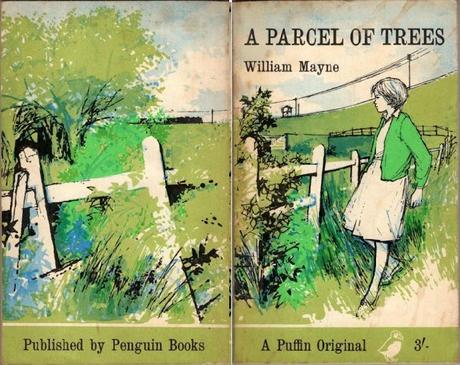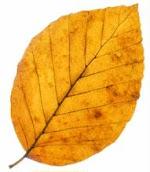No, I'm toying with you. Of course it's an apocryphal line! Though amore often has a similar effect on people, I'm led to believe. đŸ˜‰Not being able to see the wood for the trees is an old English adage from a leafier time. Its provenance is somewhat as follows. The first written reference we have is in a polemical work of Sir Thomas More from 1532/33 titled 'The Confutation of Tyndale's Answer' in which More gives us his version of what the Church is, and where he also makes his case against the heretical English cleric Robert Barnes in these words:"And as he myght tell vs, that of Poules chyrch we may well se the stones, but we can not se the chyrce. And then we may well tell hym agayne, that he can not se the wood for the trees."It appears again a decade later in John Heywood's 'Proverbes in the Englishe Tongue' of 1546 as "I see ye cannot see the wood for trees".But it's not just an English proverb. The contemporaneous version in French says "l’arbre qui cache la forêt" (the tree that hides the forest).; in Spanish it's "por ver el ĂĄrbol no ves el bosque " (seeing the tree, you don’t see the woods); and in Greek "βΝÎπω Ď„Îż δÎντĎ�Îż κιΚ ĎŒĎ‡Îš Ď„Îż Î´ÎŹĎƒÎżĎ‚" (I see the tree but not the woods)... all of which were really meaning the equivalent of "don't get hung up on details", "don't lose sight of the bigger picture" or (for my antipodean readers) "don't sweat the small stuff".

I see the tree but not the woods
What's interesting to me about the wood/trees metaphor in its various incarnations is the suggestion that there were plenty of trees about at that time (early 16th century). I'd formed the notion from reading tales of Robin Hood and kings riding out to royal hunts of stags and wild boar, that medieval England was covered with forests. But how wrong I was when I came to research the facts, which are revelatory.At the end of the Ice Age about 10,000 years ago, as the climate warmed and the ice sheet receded, trees from the continent began to re-colonize these islands, birch, pine, hazel, elm, oak and alder. Forest or woodland soon covered the majority of the country. However the impact of mankind was to make itself felt over the next few millennia as populations increased, woods were cut for building material, for fuel, and to create farmland for crops and livestock. By the bronze age (roughly 2,000 BC) it is estimated that forests and woods covered only about 50% of the land mass. That's a near halving over six millennia.
By the time of the Domesday records (1066 AD and following), arboreal coverage was down to less than 20%, another halving this time over three millennia. By the early 16th century, far from this being a land covered with forests, the proportion of the country covered by woodland had dropped well below 10%. I was staggered to read that statistic. In fact by that time, Britain was already importing large quantities of timber from continental Europe. Ironically it was the advent of coal-mining on a massive scale that helped slow down the rate at which we deforested the country, but that didn't stop the area of forested land being halved yet again over the next half a millennium, so that by the start of the 21st century less than 5% of the country is woodland. Let that sink in. Less than 5%. Does it matter? From an ecological and aesthetic perspective, you bet it does.
Thankfully we now have bodies like the Forestry Commission, the Forest Stewardship Council and the Woodland Trust helping to manage and reverse the decline in arboreal coverage, to properly look after areas of forest that are being farmed for timber, to preserve ancient forests as areas of natural beauty and scientific interest, and to encourage us all to recognize the importance of precious woodlands, and to love and to plant trees.
When I was ten years old I read a book by William Mayne titled 'A Parcel Of Trees'. I still have that copy and I've just re-read it sixty years later. Although I didn't realize it at the time, it was probably a formative influence in developing my love of nature and trees, a story about a moody teenager's need for a place to be alone, how that turns out to be an old abandoned orchard at the bottom of what had been her great grandfather's garden before the coming of the railway which bisected the land, and how with the help of a local lawyer she manages to reclaim from British Railways the right to that parcel of trees (different varieties of apple) on the other side of the tracks. I wonder how many parcels of trees the railway companies still own.

A Parcel of Trees
The pages are yellowing and the spine is cracked but it was enjoyable to re-read a tale of ordinary people triumphing over an institution in the name of green spaces. If published nowadays the book would state somewhere that it was printed on FSC certified paper, as Penguin Books is "committed to a sustainable future for our business, our readers and our planet."I know that digital publishing is good news for reducing our reliance on felling trees to make paper and I've gone digital for magazine and newspaper articles but when it comes to novels, biographies, poetry et cetera I still want the physical book. Maybe when I publish my second volume of poems I'll donate some of the proceeds to the Woodland Trust, for that charity does phenomenal work
Founded in 1972, the Woodland Trust has planted over fifty million trees in the UK, has created two hundred and fifty new community woods and is actively involved in helping to maintain over a thousand more, including some of our most ancient remining woodlands - that small but significant part of our less than 5% arboreal coverage which has existed in some places for 10,000 years. It is also trying, without any great success, to keep the UK government honest in its stated plan to plant more woodlands as part of the climate change/net zero strategy. That target was 7,000 hectares of new forest per year. In the first five years of the scheme, a total of 9,000 hectares was planted - barely a quarter of the 35,000 hectares projected.. "Glacial progress", says the Woodland Trust, "not enough, not fast enough, not good enough." Maybe a much needed change of government will help.
This latest poem is partly inspired by reminiscing on the tree-lined streets of my childhood and how they have become progressively - or should that be regressively - denuded.Lost ForestsLime Tree Avenue. I grew up there, never wonderedwhich came first, the planting or street name. It waslined with lime trees on both sides, great big beautieswith fat trunks and sticky green leaves. Not so goodperhaps for the few cars parked beneath them. Butdads would scrub those suddy clean every week-end.Besides, they were good for hide-and-seek and birds.
Beech Avenue. I was taught there from five years oldand never wondered which etc. It had its beech treesnaturally, and houses, my school and the playground .In class we wrote nature notes, about branches in budin spring, would bring in fallen leaves in autumn forthe nature table or to make pictures with. There werealways plenty left to stuff old clothes for Guy Fawkes.
What would our Victorian city fathers make of todaywith those wonderful trees all gone, felled before theubiquitous car demanding wider streets, parking lots?As Joni Mitchell sang "You don't know what you've gottill it's gone." No ash, no beech, no candled chestnuts,sticky limes, peeling maples, oak or plane, no rowans, no spreading sycamores .Only the street names remain.

Thanks as ever for reading, S ;-) Email ThisBlogThis!Share to TwitterShare to Facebook
